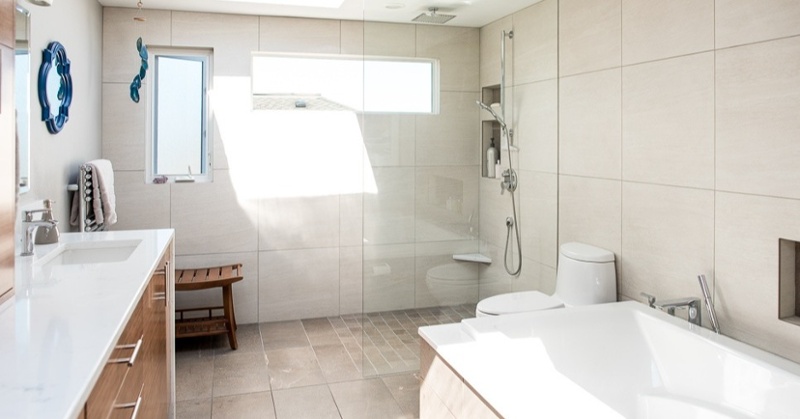
As housing and elder-care costs have continued to increase, many families are turning to multigenerational housing. This can be a great opportunity for younger and older alike. But it works best when you make some basic preparations.
Remodeling your home to accommodate an older parent
If you have invited your aging parents to move in, you will likely need to make some design changes to ensure that their stay is comfortable and safe. Depending on the current design of your home and your parent's level of mobility, you may need to do some light remodeling. Although your renovations may cost you some money, it will likely make financial sense compared to years of assisted-living fees. And you and your family will benefit from time spent with your loved one. Here are some renovation ideas that you can apply to create a more friendly living space for your mom or dad to age in place.
See also: Handling an Unexpected Physical Disability in Home Design
Is universal design the same as designing for aging in place?
As you start to explore the changes you'll need to make to adapt your home for your aging parent, you'll probably run across mentions of universal design. Universal design is an umbrella term that refers to creating spaces that are safe and accessible to all people, regardless of physical ability, age, or other needs. Designing for aging in place is a subset of universal design that focuses on the specific needs of the elderly, such as easy access to the shower, rocker light switches over traditional toggle switches, open floor plans with fewer door handles to grab, and better wheelchair mobility.
See also: Remodeling for Retirement
What is the most common aging in place remodeling project?
Usually, the two most critical rooms in your house to update will be your kitchen and a bathroom. Making them user friendly so your parents can still cook and bathe with ease if their bodies lose strength. This can mean lowering the microwave in the kitchen if it's above the stove, putting electrical outlets in easy-to-reach places, and possibly widening doorways. This is not to say that the bedroom should be overlooked. Sometimes it's worth considering a bedroom addition so your parent won't have to use the stairs often.
My Top 5 Aging in Place Design Tips
1. Install Safe Flooring
For the elderly, the risk of falling is much higher, and the consequences are more severe. Whether you are building a separate DADU or using a room in your main house, the flooring should be safe. Avoid using a slippery floor material like glossy tiles or polished stone. If you love your existing floor and are looking for a temporary solution, you can apply adhesive nonskid strips in critical areas.
2. Ditch Your Round Doorknobs
Those with arthritis can have a hard time turning doorknobs to open doors. An easy but effective upgrade is to change your round doorknobs for handle-style models. They can be pushed down easily rather than requiring a strong grip and a turning movement.
3. Redesign Your Bathroom
Bathrooms can also be challenging for seniors. Even a two-inch step into the shower can be extremely difficult for those who struggle with mobility. If possible, install a curbless shower and choose a flooring material that remains grippy when wet. The height of the showerhead should be easily adjusted, and the showerhead itself should be lightweight and easily removable for handheld use. Build in a shower seat or add a freestanding one that is designed for the purpose.
If your loved one has difficulty standing up from a seated position, you may need to swap out your standard toilet for one with a higher seat height. Be sure to add handles next to the toilet to make sitting and standing safer.
4. Give Special Attention to Stairs
For anyone with mobility issues, stairs are the most challenging part of the home. If your elderly parent is moving in, it is essential to take a critical look at your stair situation. You may need to add extra railings or even a lift. On your home's exterior, you may need to add a ramp leading up to your front or side door. It can make entering and exiting your home much easier for someone with limited mobility, and it is essential for those who use a wheelchair.
See also: Add Beautiful Accessibility to Your Home with a Well-Designed Ramp
5. Add Grab Bars Everywhere
When seniors walk around their home, they tend to reach for the closest thing to give them stability. You'll want that thing to be railing or something equally as stable. Not a chair or the flat surface of the wall.
Aging in place design
Once you've made your aging in place design checklist and presented it to your chosen design-build firm, you will be well on your way to creating a safe place for your parent to reside. Some basic attention to aging in place design will help ensure that your aging relative is safe and comfortable in your home.
Guide to Hiring a Remodeler
This comprehensive guide walks you through all the steps of choosing who will design and build your project, vetting remodeling companies, and ensuring that you have the best experience.



